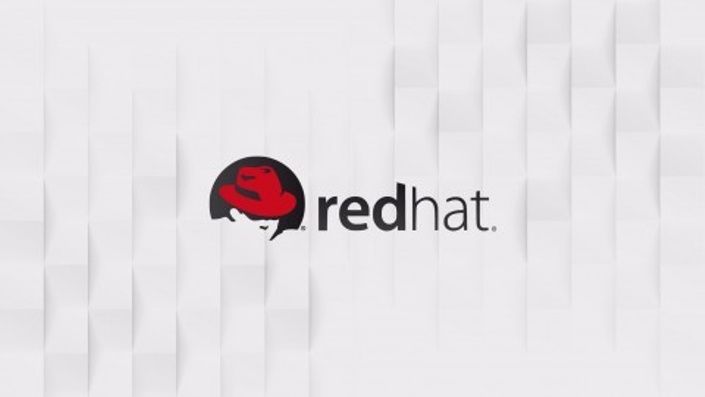After that, go to the file system navigation and Command lines. Finally, you can experience the packet manger and All are available to Deepen your knowledge!
Jerry Banfield with EDUfyre – CentOS and Red Hat Linux to Certified System Administrator!

This course can be used immediately to inspire your learning with Red Hat Linux and Preparation for the RedHat Certified System Administrator Exam (RHCSA). Ask any questions about CentOS, Red Hat LinuxOr the RHCSA and Quickly get an answer Take a look at the promo video to Find out what type of learning experience to expect from this course!
You don’t need any experience with Red Hat Linux Or any other type Linux Operating system? You can count on this course to get you ed with The basics and Show me what to you can continue on to the advanced materials. You get to See immediately why Linux It is worthwhile to learn and using. Next, some basic familiarization with You will feel confident using the graphic user interface. Now, go to the file system navigation and Command lines. Finally, you can experience the packet manger and All are available to Deepen your knowledge!
If you’re a veteran, Red Hat Linux and You want to Continue your Red Hat Linux The certification training will cover the fundamentals of the exam and three chapters that explain the key functions. and Highlighting the things you need to The key to passing the test. The key with Passing any exam takes effort. This course is another great resource. to Use along with Use your existing study material to Make sure you pass RHCSA!
This is Ermin. Ermin and I look forward to We are here to serve you as a student in the course!
Your instructor(s)
Jerry Banfield with EDUfyre
Jerry Banfield with EDUfyre
I made my first attempt at a scuba diving trip in 2005 while I was a student at the University of South Carolina. to working online. I signed up for an MLM Program and Survey website. I got refunds from both a month later and It was obvious that everything online was a scam. It was because I was afraid to fail again.
I moved into my new home in 2011 with My wife and An online business that focuses on videogame addiction was launched in an effort to to avoid dealing with I had other problems. Within a few months, my business was transformed to I sold shirts to make money from my addiction to video games. One year after I started my business, my University of South Florida criminology PhD program was cancelled. to I ran my business full-time. This had already changed. to Client assistance with Facebook and Google ads based my failures to You can do them yourself.
2013 was a year that I started sharing all I knew on YouTube in the hope of gaining more clients. I had failed in 15+ different business models and was close to bankruptcy by April 2014. Also, I was almost dead trying. to Let the pain go and I was motivated by fear of death, which is a good thing. to Recovery is possible. I am motivated by being in recovery to Focus more on providing true service to Others and It was less about what I would gain from it. Online courses in education with Udemy was my first business. I was a partner with As many skilled instructors as possible and How to learn from top instructors to Get my courses to make the most sales
In 2015, some of my recovery lessons were shared through inspirational videos. and YouTube received an incredible response. To make my videos more interesting, I created inspirational videos while playing videogames. To create a more useful website, I hired a freelancer to The videos can be converted into blog posts with this about page.
Get your instant download Jerry Banfield with EDUfyre – CentOS and Red Hat Linux to Certified System Administrator!
Course Curriculum
We are grateful that you took this course. Discover the value you receive immediately!
Introduction to The course. (8:53)
Learn why Linux? (14:43)
RedHat Installation or CentOS with Minimal modifications to Your current system.
Downloading and installing and VirtualBox configuration on Windows 8. (12:21)
Make a Red Hat Virtual machine part 1. (18:05)
Make a Red Hat Part 2. (14:36)
Make a Red Hat Part 3. (17:40)
RedHat Installation or CentOS with WIndows 8: Dual boot approach
How to dual boot Red Hat and Windows 8 Part 1. (18:42)
How to dual boot Red Hat and Windows 8 Part 2. (8:15)
Linux Graphical User Interface
Basic familiarization with Linux Graphical user interface portion 1. (10:04)
Basic familiarization with Linux Part 2. Graphical user interface. (13:36)
Linux Command line.
File system navigation. Commands “ls, cd, pwd” Part 1. (16:14)
File system navigation. Commands “ls, cd, pwd” Part 2. (14:08)
Finding files. Commands “find, locate, updatedb, man.” (19:46)
Do not forget to save and Ownership of folders and permissions. Commands “chown, chmod” Part 1. (14:00)
Do not forget to save and Ownership of folders and permissions. Commands “chown, chmod” Part 2. (8:47)
Move, delete and Copy files Commands “mv, rm, cp.” (12:58)
Commands “grep, pipe, echo, cat.” (18:55)
Yum packet manager part 1. (19:49)
Yum packet manager part 2. (14:27)
Rpm packet manager. (7:40)
RedHat Certified System Exam preparation for Administrator (RHCSA).
What is the RedHat? Certified System Include administrator exam? (16:32)
Essential tools to use Red Hat Linux and Passing the exam.
Globbing (wildcards ), part 1. Fast file retrieval without the complete name. (11:15)
Globbing (wildcards – Part 2) (15:13)
I⁄O Redirection part 1. Input and Redirect output with Standard input/output. (10:46)
I⁄ORedirection part 2. Redirect standard error to Standard output or command. (13:13)
I⁄ORedirection part 3 for redirecting standard error in more depth. (8:30)
Vim text editor part 1. How to to do text editing and use text editors. (8:35)
Vim text editor part 2. Vim text editor part 2. (11:49)
Vim text editor part 3. How to to Search for text in a file. (7:37)
Vim text editor part 4. (8:17)
Vim text editor part 5. Combining commands to Create new files (11:03)
The Red Hat Linux File system explained and Basic functions
Linux File system explanation: Where all files are located in the root directory. (18:42)
Hard and The soft links Linux File system. (8:07)
Backups, recovery, and Compression in Linux part 1. Part 1. and use. (18:46)
Backups part 2. Backups part 2. to Files that are not compressed and Backup files can be restored. (9:18)
Backups, recovery, and Compression part 3. Learn more about tar. (11:05)
Automating tasks with cron part 1. Meet the crontab and schedule tasks. (6:59)
Automating tasks with cron part 2. Part 2: Creating a Cron job and bash script. (18:05)
Automating tasks with cron part 3. Commenting out one line and Notes. (13:54)
Automating tasks with cron part 4. Learn more about crontabs. (10:00)
User and Management of groups
Property of the user and They are stored where? (12:32)
Create a user. (18:11)
Creating groups and Users being assigned to them. (19:49)
Configure your network
Intro to Network interfaces. (11:12)
Network manager. (18:31)
Network manager and Network configuration part 2 + troubleshooting tips. (19:50)
SSH allows you to establish secure connections.
Installation and Part 1: Configuring SSH Server (20:05)
Installation and Part 2: Configuring SSH Server (14:47)
Passwordless SSH login and Secure Copying Protocol (SCP) – secure copying files between hosts (16:33)
Partitioning.
Partitioning and File systems. (9:16)
Partitioning a disk. (16:33)
Formatting a partition with the xfs filesystem. (7:29)
Mounting the partitions. (20:28)
LVM Logical Volumes Management
Linux Volume Management (LVM) part 1. (12:04)
Linux Volume Management (LVM) part 2. (16:25)
Linux Volume Management (LVM) part 3. (12:31)
Linux Volume Management (LVM) part 4. (7:45)
Linux Volume Management (LVM) part 5. (8:31)
Encrypted file system
LUKS part 1. (13:55)
LUKS Part 2. (16:37)
Servers under Red Hat: FTP, HTTP, VNC
How to Install and Part 1 of configuring a webserver (18:37).
How to Install and Part 2 of configuring a web server (7:57).
How to Install and Configure an FTP server part 1 (12.42)
How to Install and Part 2 of the FTP server configuration (18:20)
How to Install and Configure VNC (16.50).
SELinux
SELinux general talk part 1 (19:14)
SELinux general talk part 2 (19:48)
Basics (19.16)
SELinux and Apache part 1 (20.18)
SELinux and Apache part 2 (17.57)
SELinux and Apache part 3 (11.27)
SELinux and SSH (5.44)
Most Frequently Asked Questions
What time does the course start? and finish?
Now is the time to enroll in this course and never ends! It is an entirely self-sustaining experience.-Online course, self-paced – you choose when you wish to learn. and Finish when you’re done.
How long can I have access? to The course?
How does lifetime access sound to you? Once you sign up, you will have unlimited access to This course can be continued for as long or as little as you wish – anywhere in the world. and all devices you own.
What if I’m unhappy? with The course?
We wouldn’t want to see you! to Do not be miserable Unsatisfied? with Contact us within the first 30 days of your purchase and We will issue a full refund.
Learn more https://archive.is/wHyKY
Course Features
- Lecture 0
- Quiz 0
- Duration 50 hours
- Skill level All levels
- Language English
- Students 79
- Assessments Yes







